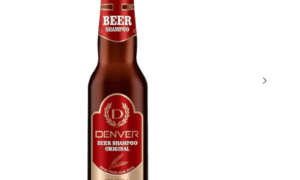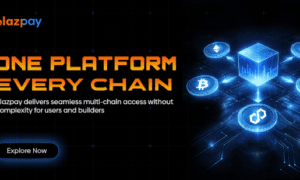Worried that a used car in Colombia might have legal issues or debts? Before buying, it’s essential to check the vehicle’s status in the RUNT system by license plate. This helps you avoid hidden problems and ensures a legal, safe purchase.
What Is RUNT and Why It Matters for Vehicle Legal Checks
The RUNT (Registro Único Nacional de Tránsito) is Colombia’s official database for vehicle and driver records. Managed by the Ministerio de Transporte, it shows verified data such as:
- Vehicle registration
- Technical inspections (RTM)
- SOAT insurance status
- Transfer records
- Owner details
Many buyers use RUNT por placa to quickly view this data. It’s one of the most reliable public tools to confirm if a vehicle is active, insured, and eligible for sale.
What Are Liens and Legal Restrictions on a Vehicle?
A lien (prenda) means the car is used as collateral for a debt, usually from a bank or credit institution. A legal restriction might come from:
- Unpaid fines
- Judicial decisions
- Legal claims
- Theft reports
If a car has any of these issues, it cannot be sold or transferred until the restriction is resolved. That’s why checking legal status before purchase is critical.
Can You See Liens or Restrictions in RUNT by Plate?
Partially, yes. You can check some data via RUNT por placa at the official website. While RUNT itself doesn’t display full lien details, it helps confirm whether the vehicle is eligible for transfer, which is often blocked if legal or financial issues exist.
What you can check using RUNT por placa soat tools:
| Information Type | Visible in RUNT? |
| Ownership and transfer status | ✅ Yes |
| SOAT validity | ✅ Yes |
| RTM inspection results | ✅ Yes |
| Transfer restrictions | ⚠️ Partial |
| Liens or financial holds | ❌ Not directly |
If you’re only using RUNT por placa soat, keep in mind it gives you important insights into the car’s insurance and inspection status—but not full legal background.
Step-by-Step: How to Check for Legal Restrictions on a Vehicle in Colombia
- Use the RUNT by License Plate Tool
Visit runt-por-placa.com.co
Enter the plate number and complete the captcha.
Check:
- Vehicle status
- Registration data
- Inspection and SOAT status
This RUNT por placa consultation is often the first step to identify whether the vehicle is properly registered and has valid documents.
- Check Fines and Sanctions in SIMIT
Go to the SIMIT portal (https://runt-por-placa.com.co/simit-multas/)
Search by:
- Vehicle plate number
- Owner’s ID number (Cédula)
SIMIT shows:
- Unpaid tickets
- Sanctions
- Vehicle immobilization orders
Note: Any active fines can prevent transfer in RUNT.
- Verify Judicial Restrictions in the National Mobility Registry (RNMA)
Some legal blocks (like theft or court-ordered holds) are registered in the RNMA system.
To access this data:
- Visit your local Organismo de Tránsito
- Request a Certificado de Tradición y Libertadfor the vehicle
This report shows:
- Complete ownership history
- Legal restrictions
- Liens or leasing details
This certificate complements the RUNT por placa soat information by providing legal background not visible online.
- Request Vehicle Certificate from the Transit Authority
Request a vehicle status certificate from the traffic authority that manages the vehicle’s file.
This will show:
- Active legal processes
- Sale restrictions
- Pending documentation
Cities like Bogotá and Medellín allow this request online.
- Contact the Financial Entity (If the Vehicle Was Financed)
If the seller financed the car with a bank or leasing company, ask for:
- A “paz y salvo” letter (debt clearance)
- Document confirming the lien was removed
Even if RUNT por placa shows the vehicle is active, the actual transfer will be blocked until this step is completed.
Red Flags That a Vehicle Has Legal Issues
Be cautious if you notice:
- Seller avoids providing title documents
- Vehicle has expired SOAT or RTM
- RUNT por placa soattool shows inactive insurance
- High unpaid fines on SIMIT
- Refusal to show legal status certificates
Always verify before handing over money or signing documents.
FAQs
- Can I check restrictions using RUNT por placa?
Yes, but only some information is visible. Full restriction or lien details require checking with transit offices or using legal certificates.
- What is a lien (prenda) on a car?
It’s a debt guarantee. The vehicle is held as collateral. You can’t transfer it legally until the debt is paid and the lien is removed.
- How can I remove a lien from the vehicle?
Ask the bank for a paz y salvo. Then visit the traffic authority to lift the lien so RUNT updates the vehicle status.
- Where can I see unpaid fines?
On the official SIMIT site, using either the vehicle’s plate or the owner’s ID.
- Can I rely on RUNT por placa soat tools alone?
They’re useful but limited. Use them as a starting point, but always request official certificates for full legal validation.
- What’s the Certificado de Tradición y Libertad?
It’s a document showing ownership history, legal annotations, and financial liens tied to the vehicle.
- How long does it take for RUNT to update after restrictions are cleared?
Once you submit valid documents, updates take 2–5 business days in most cities.
Conclusion
Using RUNT por placa and RUNT por placa soat tools helps you check the surface details of a vehicle’s legal standing in Colombia. But for full protection, cross-check with SIMIT, get a Certificado de Tradición, and confirm there are no active liens or restrictions before purchase. This keeps your investment secure and legally safe.





























